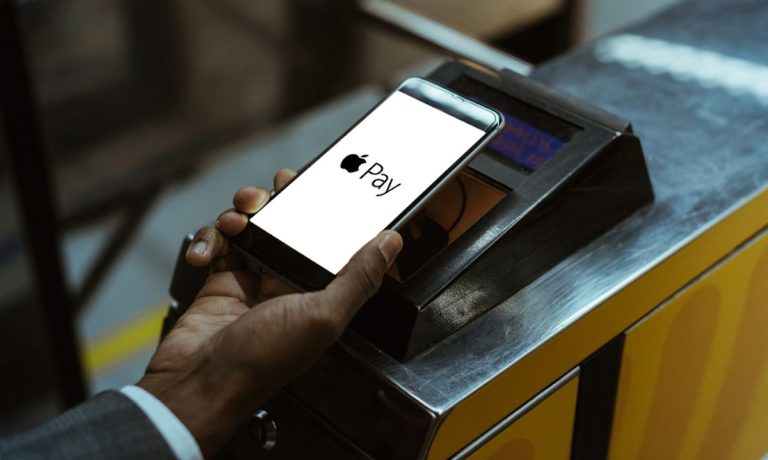
Fans of the Apple Inc. ecosystem fell in love with its smooth interoperability, whether it was sharing YouTube videos to Facebook, taking FaceTime video calls years before Zoom took off, or enjoying all manner of smartphone experiences delivered in a unified platform fashion.
The Apple Pay digital wallet is a different story, however, albeit a fascinating one.
The new PYMNTS report “Apple Pay @ 7: Winning the Wallet Battle but Losing the In-Store War,” confronts the fact that the use of Apple’s digital wallet is thus far failing to catch on as so many of its other connected services have. Tracking consumer uptake of Apple Pay since it debuted in 2014, PYMNTS researchers surveyed a census-balanced panel of over 3,670 smartphone-owning U.S. consumers who made an in-store purchase within the previous day.
Standing out in that data is the general slippage of digital wallet use in physical stores, with the report noting that “Apple Pay is faring better than other mobile wallets in the U.S., but this still puts it on the losing side of the war for in-store payments. Consumers are using mobile wallets for just 4.5% of their in-person shopping in 2021, 26% less often than in 2019 — meaning Apple has been growing its share of a shrinking market.”
More details: Apple Pay at Seven
How Apple Pay Stacks Up
In what may signal more reasons to use Apple Pay in the future, PYMNTS found that the number of smartphones equipped with Apple Pay (the iPhone 6 and later models) keeps growing, from 36% in 2020 to 44% in 2021.
Per the report, this means that “U.S. consumers are on track to spend $91.7 billion on in-store Apple-Pay purchases in 2021, up 96% from $46.9 billion in 2019. This is a sizable increase, especially given the overall shift toward online shopping during the pandemic. This success can be explained by the larger increase in numbers of consumers with Apple Pay-capable iPhones and much wider acceptance of mobile wallet payments at the point of sale.”
What’s more, researchers found that “three of Apple’s four main competitors recorded losses in their shares of in-store mobile wallet purchases. We note an especially sharp drop for Walmart Pay, which saw its market share collapse from 13.8% in 2020 to 4.8% in 2021. Only Samsung Pay has gained a modest amount of traction this year, boosting its share from 8.1% to 9.9%, but this comes after a steep decline the year before.”
More details: Apple Pay at Seven
Acceptance and Adoption
What’s holding back digital wallet adoption generally isn’t fear of technology or lack of the right smartphone: It’s the more pedestrian reason that people prefer credit and debit cards in-store.
Per the study, “the rise of contactless credit and debit cards provides a strong explanation for the slipping share of mobile wallets. Respondents who paid in-store using a mobile wallet in the last 24 hours cited convenience (31.2%), easiness (23.6%) and speed (17.9%) as their top three reasons for choosing this form of payment. These are also strong points of contactless card payments, which offer a similar touch-free checkout experience.”
Those carrying late-model iPhones will benefit from greater mobile wallet adoption down the line, provided that they choose to tap into Apple Pay for purchases in greater numbers.
“PYMNTS estimates that in 2021, 70% of brick-and-mortar retailers accept Apple’s mobile wallet, versus 65% that did last year,” according to Apple Pay at 7.
“This confirms the fact that the primary cause for Apple Pay’s lackluster performance lies with consumers who could use the wallet, but prefer not to. Apple’s wallet has recorded significant increases in the shares of eligible transactions and of eligible stores’ overall shoppers that use the mobile wallet in 2021 versus 2020, though both remain low.”
More details: Apple Pay at Seven